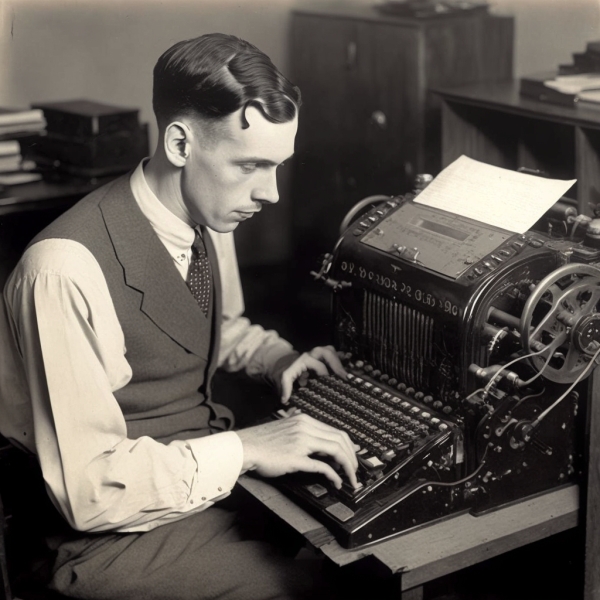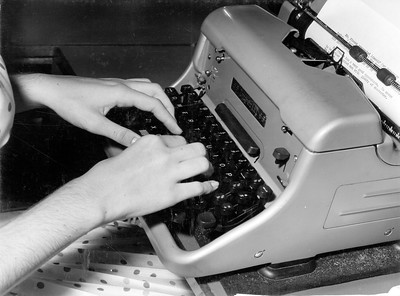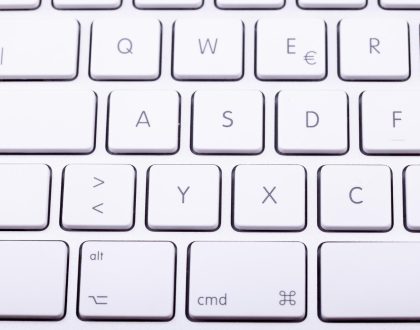History of Touch Typing

Introduction to History of Touch Typing
Touch typing is a vital skill that has played a significant role in the evolution of written communication. It allows people to type quickly and accurately, and has revolutionized the way we work, communicate, and access information. In this post, we will delve into the rich history of touch typing, from its early beginnings with the mechanical and manual typewriters to the modern virtual keyboards and voice recognition software of today.
The History of Touch Typing
The history of touch typing is closely intertwined with the development of the typewriter and the computer. The mechanical typewriter, invented in the 1870s, was the first known form of typing and allowed for much faster and more accurate writing than hand-writing. The manual typewriter, invented in the 1890s, eliminated the need for the typist to use as much force to press the keys, and introduced the concept of touch typing. The QWERTY keyboard layout, developed in the 1870s, is still used on most modern keyboards today.
Early Computer Keyboards
The emergence of computers in the mid-20th century revolutionized typing and made it easier and more efficient than ever before. Early computer keyboards were similar to manual typewriters, but had several key differences that made them much more advanced. The use of electronic switches instead of mechanical ones allowed for faster and more accurate typing, and the ability to store and process text digitally. The introduction of the touch typing method made it possible to type without looking at the keys, and it quickly became the standard method for typing on computers.
Ergonomic keyboard and Voice Typing
Over the past few decades, there have been numerous developments in typing technology that have made it even easier and more efficient to type. The introduction of ergonomic keyboards, the rise of virtual keyboards, and the growth in the use of voice recognition software have all contributed to the evolution of touch typing.
Typewriter
The manual typewriter, invented in the 1890s, represented a major advancement in typing technology. It eliminated the need for the typist to use as much force to press the keys, and introduced the concept of touch typing. The manual typewriter used a system of levers and springs to reduce the amount of effort required to type, which made it much easier and more efficient to use.

QWERTY Keyboard Layout
The QWERTY keyboard layout, developed in the 1870s by Christopher Latham Sholes, is still used on most modern keyboards today. The layout was designed to slow down the typist in order to prevent the mechanical arms of the typewriter from getting stuck together. Despite the fact that it was not the most efficient layout, it became the standard for typewriters and is now so prevalent that it is almost impossible to imagine using a different keyboard layout. The article Why QWERTY Keyboard’s Layout is so Popular and Widely Used?, delve into the reasons of QWERY popularity.
Computer and History of Touch Typing
The emergence of computers in the mid-20th century represented a major milestone in the history of touch typing. These early computers revolutionized the way we work, communicate, and access information, and made typing easier and more efficient than ever before.
Computer keyboards
Computer keyboards in their early stages were designed to resemble manual typewriters in their use of levers and springs to lessen the effort needed for typing. However, there were several features that set them apart and made them more advanced. One of the main differences was the incorporation of electronic switches rather than mechanical ones, enabling faster and more precise typing as well as the capability to store and process text electronically. This was a major improvement, as it facilitated easier editing and revising of documents.
Computer keyboards also had the ability to input a wider range of characters and symbols, including special characters and accents. This made it possible to type in a variety of languages and scripts, and greatly expanded the possibilities for written communication.
Touch Typing
Another major difference was the introduction of the touch typing method. With the use of computer keyboards, it became possible to type without looking at the keys, as the keys were arranged in a standard layout that was easy to learn. This made it much easier for people to become proficient at touch typing, and it quickly became the standard method for typing on computers. The ability to touch type significantly increased the speed and accuracy of typing, and made it a much more efficient process. If you want to learn more about touch typing, be sure to read our informative article, “Introduction to Touch Typing.”
Overall, the rise of computers greatly improved the efficiency and accuracy of typing, and made it an essential skill for many professions. The ability to type quickly and accurately is now a fundamental part of many jobs, and is essential for anyone who wants to succeed in the modern world.
Modern Developments in Typing Technology
Over the past few decades, there have been numerous developments in typing technology that have continued to evolve the way we type and interact with computers. These developments have made it even easier and more efficient to type, and have addressed many of the limitations and issues that have arisen with traditional keyboards.
Ergonomic Keyboards
One of the main developments in typing technology has been the introduction of ergonomic keyboards. These keyboards are designed to reduce strain on the hands and wrists, which can be a common problem for people who spend a lot of time typing. Ergonomic keyboards often have a split or curved design, which allows for a more natural and comfortable typing position. They may also have special features such as adjustable keys or wrist rests, which can further reduce strain and fatigue.
Virtual Keyboards
Another important development in typing technology has been the rise of virtual keyboards. These keyboards allow users to type using a touchscreen or other input device, and can be used on a wide range of devices, including smartphones, tablets, and laptops. Virtual keyboards have made it possible to type on the go, and have greatly expanded the possibilities for mobile communication and productivity.
Voice Recognition Software for Typing
In recent years, there has also been a growth in the use of voice recognition software for typing. This technology allows users to type by speaking into a microphone, which can be especially useful for people with disabilities or who have trouble using a traditional keyboard. Voice recognition software has made it possible for people with limited mobility to type with ease, and has greatly improved access to written communication for many people. If you would like to learn more about voice typing, we recommend reading our article “Voice Typing.” This resource will provide you with more information on this convenient typing method.
Overall, the current state of touch typing technology is highly advanced, with a range of options available to suit different needs and preferences. Whether you prefer a traditional keyboard, an ergonomic one, a virtual keyboard, or voice recognition software, there is a solution for you. The continued evolution of typing technology has made it easier and more efficient to type, and has greatly impacted our daily lives and the way we interact with computers.
Conclusion
The history of touch typing is a fascinating story that spans more than a century and reflects the many advancements in typing technology that have occurred over the years. From the early mechanical and manual typewriters to the modern virtual keyboards and voice recognition software of today, touch typing has come a long way and has greatly impacted the way we work and communicate.
The development of the QWERTY keyboard layout and the rise of computers have played a key role in the evolution of touch typing, making it faster and more accurate than ever before. The ability to type quickly and accurately is now a fundamental part of many jobs, and is essential for anyone who wants to succeed in the modern world. Whether you are a student, a professional, or just someone who spends a lot of time typing on a computer or other device, the ability to touch type can greatly improve your speed and accuracy and make your work easier and more efficient.
Despite the many advances in typing technology, touch typing remains an essential skill in the modern world. Whether you are just learning to touch type or are looking to improve your skills, there are a wide range of resources available to help you achieve your goals. So, the history of touch typing is not only interesting but also important for our daily lives. By understanding the history of touch typing, we can better appreciate the impact it has had on our daily lives and the role it will continue to play in the future.
Looking to improve your typing skills and increase your speed and accuracy? Our Learn Touch Typing in 12 Simple Lessons book can help! With just a few short lessons, you’ll master the touch typing method and be on your way to becoming a faster, more efficient typist. Whether you’re a student, professional, or simply someone who uses a computer for everyday tasks, our book can help you to take your typing skills to the next level. Plus, by learning touch typing, you can reduce the risk of discomfort or irritation while typing, and even prevent repetitive strain injuries. So why wait? Get your copy of Learn Touch Typing in 12 Simple Lessons today and start typing like a pro!
Related Posts
July 14, 2024
Types of Keyboards
October 29, 2023






isn’t too short history of touch typing.